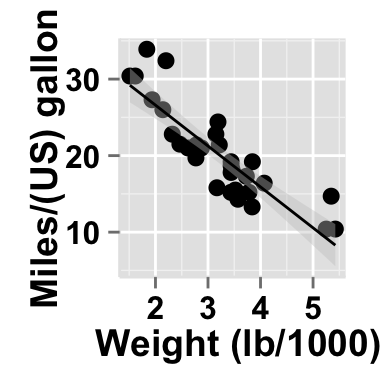

Let’s quickly convert am to a factor variable with proper labels: id % mutate(am = factor(am, levels = c(0, 1), labels = c("automatic", "manual")))
Ggplot2 scatter plot exclude zero points manual#
Say we want to plot cars’ horsepower ( hp), separately for automatic and manual cars ( am). with 22 more rows, and 2 more variables: gear, carb #> rowname mpg cyl disp hp drat wt qsec vs am Let’s use mtcars as our individual-observation data set, id: id % tibble::rownames_to_column() %>% as_data_frame()
Ggplot2 scatter plot exclude zero points code#
To get started, we’ll examine the logic behind the pseudo code with a simple example of presenting group means on a single variable. Let’s load these into our session: library(ggplot2) Throughout, we’ll be using packages from the tidyverse: ggplot2 for plotting, and dplyr for working on the data. # Adjust plot to effectively differentiate data layers # Have an individual-observation data set Following this will be some worked examples of diving deeper into each component. General approach #īelow is generic pseudo-code capturing the approach that we’ll cover in this post. Do take the time to read it if you get the chance. This paper is an excellent resource that goes into some very important details that motivate the work presented here, and it shows some really great plot examples (with R code!). But when individual observations and group means are combined into a single plot, we can produce some powerful visualizations.Ī quick note that, after publishing this post, the paper, “Modern graphical methods to compare two groups of observations” (Rousselet, Pernet, and Wilcox, 2016) was brought to my attention by Guillaume Rousselet, who kindly agreed to the reference being posted here. For example, we can’t easily see sample sizes or variability with group means, and we can’t easily see underlying patterns or trends in individual observations. Separately, these two methods have unique problems. Alternatively, we plot only the individual observations using histograms or scatter plots. We often visualize group means only, sometimes with the likes of standard errors bars. I find these sorts of plots to be incredibly useful for visualizing and gaining insight into our data.


Here are some examples of what we’ll be creating: OctoPlotting individual observations and group means with here to share my approach for visualizing individual observations with group means in the same plot.


 0 kommentar(er)
0 kommentar(er)
